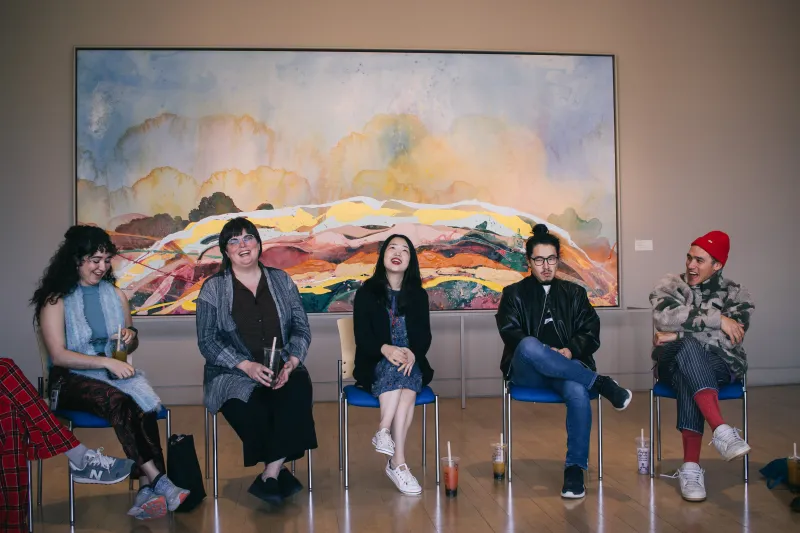Korean-American artists A young Yu and Nicholas Oh created a 22-minute performance-based video, “Mourning Rituals,” on display in Stanford’s Cantor Arts Museum until May. The work incorporates Korean Shamanism through folklore, dance and rituals that were passed down to Yu by her grandmother, who recently passed away.
“The rituals are not only for living people but to cleanse the spirits of the deceased and guide them into the afterlife,” Yu said in a Q&A at the Cantor on Friday.
In this experimental short film, Yu mimics the rhythmic practice of the ssitkimkut ritual and its healing nature through meditative folk dances that incorporate funeral rites. The film’s audio was derived from traditional Korean shaman chants to accentuate the rituals’ history and cultural significance.
“‘Mourning Rituals’ encapsulates collective and personal experiences that are hard to even process,” Yu solemnly expressed.
The artists began filming in early 2020. As the COVID-19 pandemic brought trauma and grief to the world, the project deeply resonated with the public.
Yu and her collaborator Oh — both alums of Brown University’s School of Design — traveled to Kauai, Hudson Valley and, most strikingly, the Demilitarized Zone (DMZ) between North and South Korea. They wanted to create footage that encapsulates “meditation on loss in ancestral, historical and geographical registers.”
Yu originally thought that filming in DMZ was a “wild” suggestion because of its history of intense political conflict. She eventually came to realize the aesthetic beauty of “this land that has been reborn and is thriving as a natural biosphere after remaining untouched.”
The two artists shot scenes in prehistoric caves, swamps and burial mounds where ancestral rituals take place in Korea. Yu had to submerge herself in various grimy swamps but believed that “it was totally worth it.”
When Yu and Oh were filming, the greatest challenges were the unpredictability of the weather and early morning hours. In order to take advantage of golden hour lighting for a waterfall shot, the two artists ventured on a two-hour hike at 3 a.m. to avoid tourists.
“It was pitch black, slippery from the rain and on a cliff coast, but we wore headlamps and powered through,” Yu nostalgically recounted.
One of her favorite performances from the video was on a frozen river that lies on the border between North and South Korea. Because of global warming, the ice had started melting. Oh had to hold his camera above his head to capture the perfect shot.
To shoot a dance scene encased in a ring of fire, the artists poured gasoline in a circle and danced amidst the 4 a.m. beach winds fanning the flames. “Our dancer was very brave and thankfully no one was harmed,” Yu said and laughed.
“I wanted to take ancestral Korean rituals and re-contextualize them with a contemporary and feminist perspective that made sense to me,” Yu told the audience. To achieve this, the team carved hundreds of vulvas and displayed them in the prehistoric caves to honor the original female shamans, who were prominent in the practice before men took over.
“We referenced all four seasons and incorporated elements to represent cycles throughout a year and the human experience,” Yu said. The motif of circles is repeated throughout the film, including shots of an egg entering and exiting Yu’s mouth. The egg represents the cycle of life and the transfer from one body to another.
When asked why she chose the visual medium of film for her project, Yu professed, “The large screen creates a one-to-one bodily relationship with the viewer.” For example, incorporating kimchi into the film engages the viewer’s senses in a visceral manner.
Yu is currently working on two new projects, “Dreams” and “Blood Memory,” both of which involve indigenous Asian identity. For “Dreams,” Yu asks intergenerational Asian Americans to recount their dreams. She will then create a large, immersive installation that reenacts the dreams of her mother and grandmother. In another performance-based film, “Blood Memory,” she will illustrate how shamans embody deceased ancestors as a way of helping relatives heal after the loss of a loved one.
